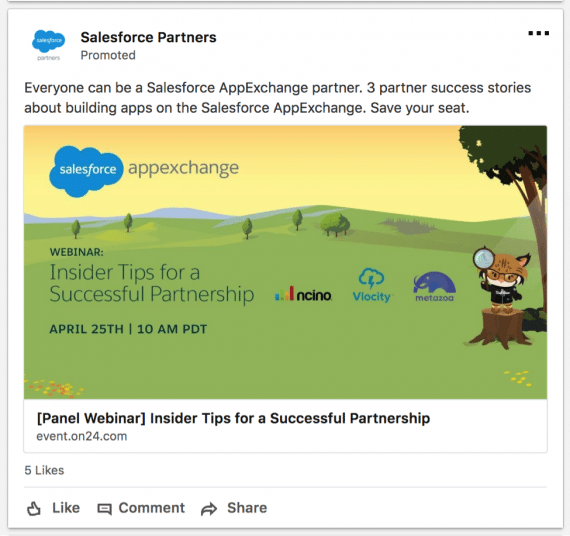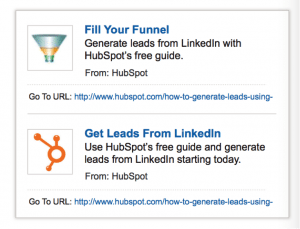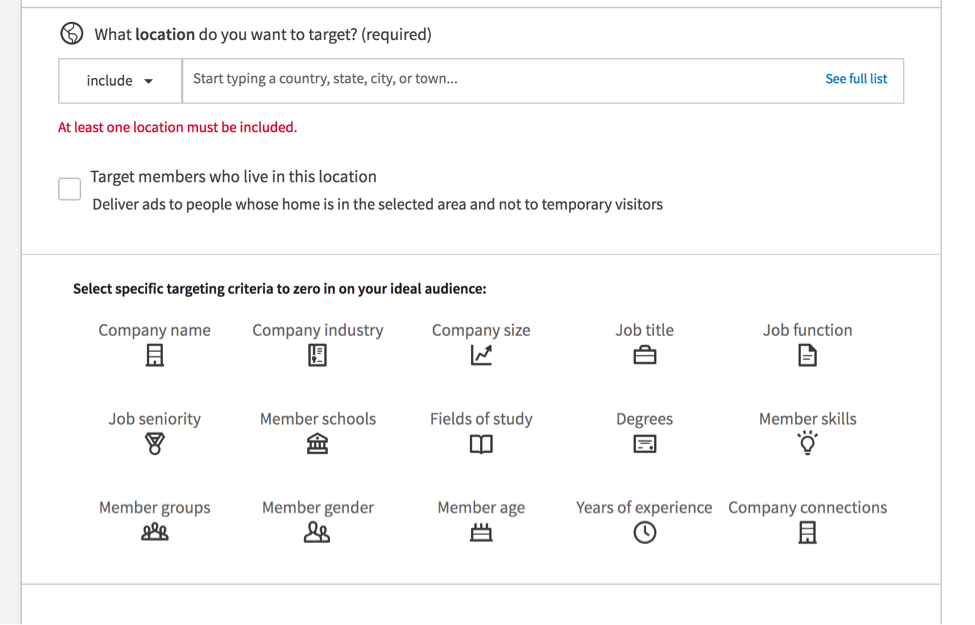Advertising on LinkedIn has come a long way. But the platform still isn’t getting the attention it deserves.
Until now.
With Facebook’s data controversy and the renewed concerns about online privacy, advertisers are searching for alternatives. To be sure, LinkedIn should not account for your entire ad budget. But it’s worth getting reacquainted.
LinkedIn is a social network with over 500 million worldwide users. It’s geared towards professionals. It has thankfully become more informal over the years — from business professional to business casual. And because it’s for professionals, you can bet that it’s possible to target all things business.
In this post, I’ll address what LinkedIn ads can do.
Ad Options
There are three options for self-serve ads on LinkedIn: Sponsored Content, Text Ads, and Sponsored InMail. The choice depends on the objective, although there is some overlap.

LinkedIn offers three ad options: Sponsored Content, Text Ads, and Sponsored InMail.
Sponsored Content
This is similar to newsfeed ads on Facebook. Sponsored Content ads appear directly in the feed of LinkedIn users. The ads look like a normal post. They typically include a large image or video and short bit of text. You can add short links and calls-to-action, similar to a Facebook ad. Also like Facebook, you’ll need a connected page to run ads. So make sure your company page on LinkedIn is completed and up to date.

Sponsored Content ad with video and a “Download” call to action.
—

Standard Sponsored Content ad.
Text Ads
These are the original LinkedIn ads. They appear on the right side of the site. They include a 50×50 image, some text, and a link. You’re better off sticking with Sponsored Content in my experience, but Text Ads still work with a clear call to action.

Example LinkedIn Text Ads.
Sponsored InMail
Sponsored InMail ads appear as messages in users’ LinkedIn inboxes. These are similar to the Gmail ads, except users are notified about these messages. They are nearly identical to a standard (non-advertising) InMail messages. These are effective, but they also tend to annoy users, encroaching on their personal space.
Rate Options
Ad rates on LinkedIn are calculated similarly to other ad networks. You can pay based on:
- The number of clicks (“cost per click” or “CPC)”),
- Every 1,000 impressions (“cost per thousand” or “CPM” — “M” is 1,000 in Roman numerals),
- The number of InMail messages sent (“cost per send” or “CPS”).
LinkedIn ads are more expensive. They range from $7-$12 per click. This has always been one of the biggest detractors of LinkedIn advertising. It means you have to focus on having a complete and non-leaking funnel. Sending LinkedIn users to a page that is not well planned — or not having a clear goal — will ensure failure.
Targeting and Tracking

LinkedIn offers many targeting options — company name, industry, company size, job title, and many more.
Targeting is where LinkedIn shines. Regarding privacy, LinkedIn allows targeting only based on a member’s clear actions and public information. There are no implied interests or use of third-party data. Instead, the targeting is based what members have chosen to disclose, such as industry, title, degrees, and schools. This should ease concerns of users and advertisers.
If you have an idea of your ideal customers — such as their industry, seniority, marital status, age, and education — you can hyper-target ads on LinkedIn. You could, for example, target alumni of University of Central Missouri (my school) that work at Pepsi in a marketing function. You can create that targeting combination and mention it directly in your ads.
The ability to track conversions is probably the greatest improvement in LinkedIn ads. You no longer have to rely on users saying they came from LinkedIn, or spotty UTM tracking. Now there’s a pixel. It’s easy to set up, and it’s a must for any LinkedIn campaign that sends users your site.